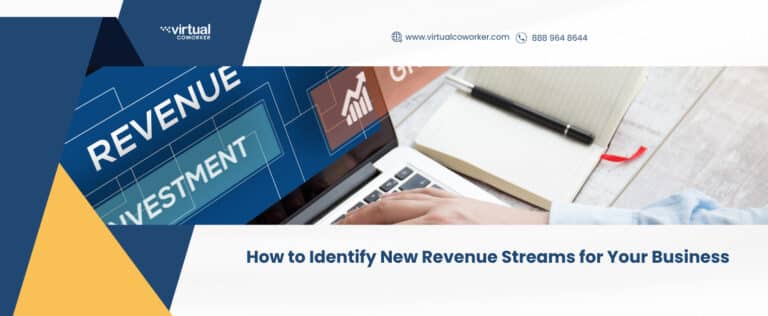The Art of Upselling: Increasing Revenue Without Losing Customers
Can a well-executed upsell improve the customer experience? Absolutely YES!
The key lies in timing, messaging, and the right approach. Upselling is one of the most effective ways to boost revenue without acquiring new customers. When done correctly, it enhances the customer experience by offering additional value, rather than feeling like a pushy sales tactic.
Studies show that businesses that upsell effectively can increase revenue by 10-30% on average. However, to avoid turning customers away, businesses must focus on timing, relevance, and the right approach.
Below we explore strategies for upselling without losing customer trust and how Virtual Assistants can help execute these strategies efficiently.
Why Upselling Works for Business Growth
Upselling is the practice of encouraging customers to upgrade or enhance their purchase. Unlike cross-selling (which recommends related products), upselling focuses on offering a premium version, additional features, or an upgrade that improves the customer’s original choice.
✔ Higher revenue per transaction – Increased spending per customer without additional marketing costs.
✔ Enhanced customer satisfaction – When relevant, upsells help customers get the most out of their purchase.
✔ Increased brand loyalty – Customers appreciate thoughtful recommendations, leading to long-term relationships.
✔ Lower customer acquisition costs – Selling to existing customers is significantly cheaper than acquiring new ones.
When executed properly, upselling adds value rather than pressure, making customers feel like they’re making the best decision for their needs.
Five Smart Upselling Strategies to Boost Revenue
1. Offer Complementary Products or Services
A great upsell aligns with what the customer already wants. Pairing complementary products or services improves the buying experience and increases perceived value.
How to apply this strategy:
- E-commerce: Suggest accessories that enhance the main purchase (e.g., offering a phone case with a smartphone).
- Service-based businesses: Bundle premium features or add-ons (e.g., offering SEO optimization with a web design package).
- Hospitality: Upgrade to a better hotel room for a small additional fee.
Example: A coffee shop offering a discounted pastry when a customer buys a coffee.
2. Use Bundling to Create More Value
Bundling related products or services into a single package at a discounted rate makes the offer more attractive.
How to apply this strategy:
- Create a starter kit that includes everything a customer needs.
- Bundle frequently bought-together products into one convenient offer.
- Offer tiered service packages where higher tiers provide better value.
Example: Software companies bundling their basic plan with premium customer support for a slightly higher price.
3. Time Your Upsell at the Right Moment
Timing is crucial. Customers are more likely to say “yes” when they are already engaged with your product or service.
When to upsell effectively:
- At checkout – Recommend relevant add-ons before finalizing the purchase.
- After a positive experience – Follow up with an upgrade offer after successful product use.
- During product onboarding – Offer premium features while customers are actively using your product.
Example: An airline offering a seat upgrade at check-in, when travelers are already in “purchase mode.”
4. Personalize Upsells Based on Customer Data
Customers appreciate relevant recommendations. Use purchase history, browsing behavior, and preferences to suggest tailored upsell options.
How to personalize upselling:
- Leverage CRM data to track customer preferences.
- Use AI-driven insights to recommend upgrades based on past purchases.
- Offer exclusive upsell deals to loyal customers.
Example: Streaming services like Netflix or Spotify suggest premium plans based on user habits.
5. Make It Easy to Say Yes
The best upsell offers are clear, simple, and easy to accept.
How to make upselling frictionless:
- Highlight the added value instead of just the price increase.
- Offer a low-risk upgrade, like a free trial or money-back guarantee.
- Use one-click upsells to make accepting the offer effortless.
Example: Amazon’s “Frequently Bought Together” section encourages customers to add related products with one click.
How Virtual Assistants Help Businesses Upsell More Effectively
Upselling requires consistent tracking, execution, and follow-ups, which can be time-consuming for business owners. Virtual Assistants help streamline the process by identifying upsell opportunities, managing campaigns, and handling customer interactions.
- Monitor transactions, browsing history, and purchase patterns to recommend relevant upsells.
- Create and automate email and SMS upsell campaigns, ensuring timely and targeted offers.
- Set up one-click upsells, checkout add-ons, and exclusive bundle promotions to boost conversions.
- Send follow-up emails, chat messages, and surveys to offer relevant upsell suggestions.
Key Takeaways: The Right Way to Upsell
Upselling shouldn’t feel like a hard sell, it should feel like a helpful recommendation that enhances the customer’s purchase. By using timing, personalization, and a value-driven approach, businesses can increase sales without pushing customers away.
With Virtual Assistants managing upselling tasks, businesses can increase revenue efficiently while maintaining customer trust.
Find out how a Virtual Assistant can help today on scaling your upselling strategy: www.virtualcoworker.com!








